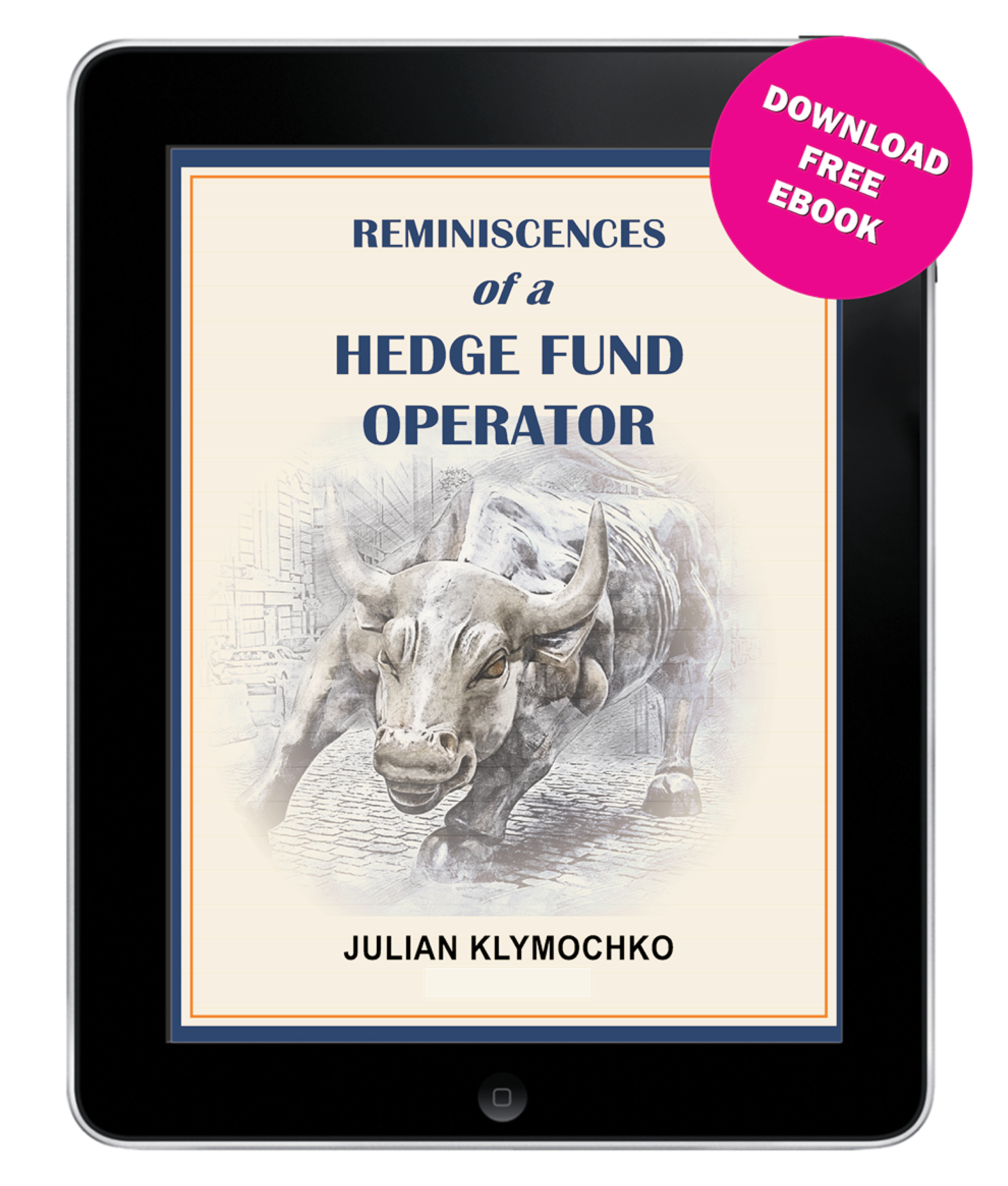April 30, 2023 – Recession. Inflation. Inverted yield curve. Equity valuations. Banking crisis. Rate hikes. Debt ceiling. Defaults. War.
The list of economic, geopolitical, and market concerns is extensive.
However, once we take stock of all the pressing issues that are top of mind for investors, it generally boils down to one question:
“How will any one of these potential risks affect my investment portfolio?”
More specifically, investors are concerned about downside risks. I have never heard of an allocator overly stressed about upside volatility in their portfolio.
As rational investors, we aim to maximize risk-adjusted returns. That is, to generate the highest return with the least amount of risk.
Fifteen months ago, T-bills yielded zero. It was tough to justify an investment with an expected return of nothing.
A lot has happened since early 2022, and short-term yields have surged. As a result, securities including T-bills and money market funds now feature yields not seen in a generation.

Source: Board of Governors of the Federal Reserve System
After being deprived of low-risk yield for so long, investors have flocked to money market funds. A 5% yield with near-zero risk holds substantial appeal for allocators in the current market environment, especially since long-term Treasury yields are below 3.5% and the S&P 500 has an earnings yield (inverse P/E ratio) of 5%.

Source: Bank of America
The tally of worries about what can go wrong for investors in this environment is significant. Combine an attractive yield on money market funds with investors looking to mitigate a long list of risks and it is no wonder that assets in money market funds have surged to a record high of $5.1 trillion.
The options for investors seeking low-risk, high-yield alternatives to T-bills and money market funds often get lost in the mix.
Many allocators may not know that SPACs present one of the most unique alternatives to the money market fund, providing the security of T-bills combined with the upside of an equity call option.
Here is a quick SPACs 101.
A special purpose acquisition company takes capital from investors and places it in a trust account. The trust account owns short-term Treasury bills. These T-bills currently yield approximately 5.0%. If a SPAC is domiciled offshore, such as Cayman or BVI incorporated (nearly 50% of them are), then investors earn the T-bill yield tax-free. In addition, to incentivize investors to buy a SPAC IPO, the sponsor of the blank check company will put additional cash into the trust account, boosting its yield. In the dozen SPAC IPOs this year, sponsors have added an extra 2% to the SPAC’s trust account, boosting its yield to 6-7%. In addition, the SPAC units in an IPO generally come with a warrant or a right, and sometimes both. These securities provide additional income to investors.
A SPAC has a limited time to complete a business combination, and if they do not, the sponsor returns the net asset value (initial capital + overfunding + accrued interest) to investors. If the SPAC announces a business combination, investors again have the opportunity to redeem for the net asset value. The sponsor cannot use a blank check company’s trust account before the redemption opportunity except to pay a limited amount of expenses including franchise taxes, income taxes (if domiciled in the U.S.), etc.
Typically, a SPAC presents a money market-like exposure for investors with two key advantages.
First, the yield of a SPAC compares favourably to money market funds. As outlined in last month’s memo, IPO: It’s Potentially An Opportunity, we described the expected yield from SPAC IPOs as 6.0% to 10.0%.
Second, the dynamic that an attractive business combination presents is upside optionality. That is, the ability to trade above and beyond its NAV once an attractive merger is announced. While this upside optionality dynamic has not occurred recently, it has happened in the past and likely will again in the future. The key is to be positioned before it happens.
In addition to a potentially superior alternative to a money market fund, a SPAC offers the investor a free call option through a prospective business combination. The greatest upside optionality comes from a business combination with a company that is attractive to the market in the short term while having solid long-term prospects. At their core, successful business combinations occur in sectors with significant hype along with attractive fundamental business prospects.
Artificial intelligence is the topic du jour. AI is so exciting because it can potentially transform virtually every industry, from healthcare and finance to transportation and retail. Moreover, the rapid growth and development of AI technology have led to significant advancements in machine learning, natural language processing, and computer vision, among other areas. As a result, AI is poised to become a fundamental part of our daily lives, making it an incredibly exciting field to work in and follow.
ChatGPT, a large language model trained by OpenAI, based on the GPT (Generative Pre-trained Transformer) architecture, is one recently released AI tool that has taken the world by storm. Its ability to generate human-like responses to text-based inputs in a variety of contexts, ranging from answering questions and completing sentences to engaging in conversations and providing recommendations, is incredibly impressive and highly useful.
ChatGPT’s mind-blowing growth rate, a testament to its innovative capabilities and features, is truly unprecedented.

It appears that nearly everyone uses ChatGPT already, so its wonders need no additional lauding. What matters for this memo is, how does ChatGPT relate to SPACs?
Sam Altman is the CEO of OpenAI, ChatGPT’s parent company. As it relates to the blank check asset class, Sam Altman is the CEO of a SPAC called AltC Acquisition (NYSE: ALCC). In addition, OpenAI’s CFO, Brad Lightcap, is also on the management team of AltC Acquisition.
It is safe to say that ALCC’s sponsor is stocked with the most knowledgeable, connected, and incentivized management team in the artificial intelligence space.
The leadership team behind ChatGPT guides AltC Acquisition, which is one reason it is a top position of the Accelerate Arbitrage Fund (TSX: ARB).
AltC’s deadline is coming up later this year, and they may not strike a deal in the AI space. In fact, they may not consummate a business combination at all. Nevertheless, ARB took a stake in ALCC earlier this year at an expected yield of 6%. In the worst-case scenario, we expect to generate an attractive yield greater than money market funds. In the best-case scenario, they announce an attractive business combination and ALCC trades far above its NAV. Heads we win, tails we win big.
If you look at the share price chart of ALCC, it does look eerily similar to a money market fund’s total return (aside from the recent bump that occurred after we disclosed ARB’s position in the name).

Source: Google Finance
While the media may try to convince you otherwise, the SPAC market is alive and kicking. There have been 12 SPAC IPOs year-to-date, raising a total of $1.4 billion. In addition, 68 business combinations have been announced this year, representing an aggregate enterprise value of $27.6 billion. While the number of blank check companies has declined since their peak a year ago, there are still 429 SPACs outstanding.
The SPAC market is still active, presenting a myriad of attractive opportunities for investors. For allocators looking for a potentially superior form of money market exposure, or even potential artificial intelligence-led upside optionality, these opportunities can be unearthed in the SPAC asset class.
Come on in, the water’s fine.
The Accelerate AlphaRank SPAC Monitor details various metrics on the current opportunity set while offering details on every individual SPAC currently outstanding. The Accelerate AlphaRank SPAC Effective Yield tracks the average arbitrage yield offered. The Accelerate AlphaRank SPAC Index tracks the price return of the SPAC universe.



* AlphaRank is exclusively produced by Accelerate Financial Technologies Inc. (“Accelerate”). The Accelerate Arbitrage Fund may hold a number of securities discussed in this research. Visit AccelerateShares.com for more information.



